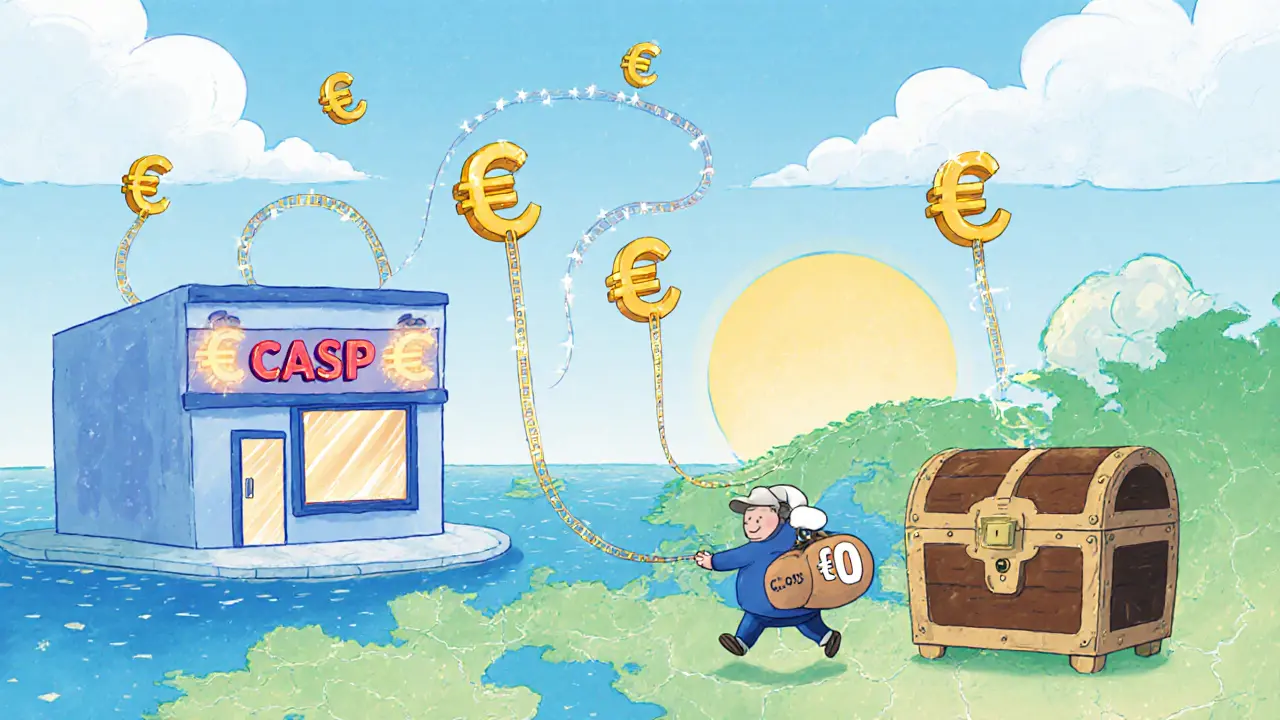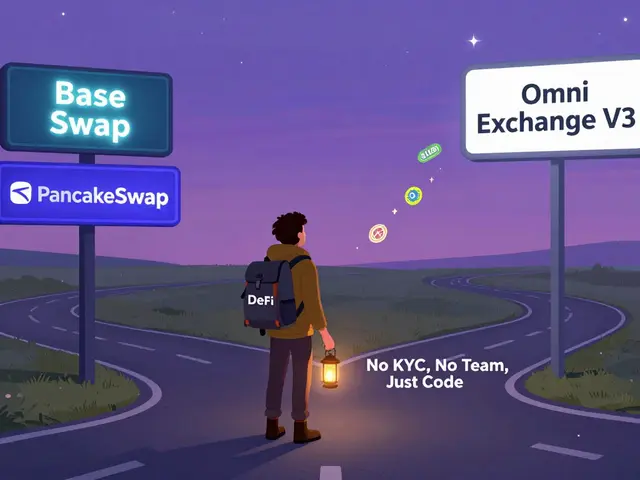EU Travel Rule: What It Is and Why It Matters
When working with EU Travel Rule, the regulation that forces crypto service providers to exchange sender and receiver details for cross‑border transfers within the European Union. Also known as EU AML Travel Rule, it extends traditional banking reporting standards to digital assets, aiming to curb money laundering and terrorist financing, you instantly touch on three core concepts: Anti‑Money Laundering (AML), the broader framework that obliges financial actors to monitor and report suspicious activity, the Financial Action Task Force (FATF), the global body that set the original Travel Rule for banks and now pushes it onto crypto firms, and the upcoming MiCA, the EU's Markets in Crypto‑Assets regulation that will codify many Travel‑Rule obligations. In short, the EU Travel Rule sits at the intersection of AML policy, FATF standards, and MiCA compliance.
How the Rule Shapes KYC, Data Sharing, and Exchange Practices
To obey the EU Travel Rule, a crypto exchange must first collect robust Know Your Customer (KYC), verification data like name, address, and ID documents from both the sender and the receiver. Once that data is on file, the platform must transmit it to the counter‑party’s service provider whenever a transaction exceeds the 1,000 EUR threshold. This creates a direct semantic triple: EU Travel Rule requires KYC data exchange. The rule also triggers a compliance loop: FATF influences EU Travel Rule, and MiCA codifies the same requirements. Exchanges that ignore these steps risk hefty fines, blacklisting, and loss of banking relationships.
Beyond KYC, the rule pushes firms into the realm of secure data pipelines. Providers must adopt encrypted messaging standards—often based on the InterVASP protocol—to ensure that personal data isn’t exposed in transit. That technical layer ties back to AML because the same encrypted channel can carry suspicious‑activity alerts to regulators. In practice, a VASP (Virtual Asset Service Provider) that integrates InterVASP can share transaction details while preserving privacy controls, satisfying both AML monitoring and data‑protection laws like GDPR. This demonstrates another semantic connection: EU Travel Rule enables secure AML reporting through InterVASP. For readers looking to set up a compliant crypto service, understanding this bridge between legal duty and technical solution is essential.
Regulators also expect continuous risk assessment. Under MiCA, crypto firms must produce an AML risk‑assessment report that outlines how they will meet the Travel Rule for high‑value transfers, how they’ll detect structuring attempts, and what internal controls they’ll use. The report itself becomes a compliance artifact that links the three entities: MiCA requires AML risk reports, which in turn address the EU Travel Rule. This creates a feedback loop where policy shapes practice, and practice informs policy revisions. If you’re a compliance officer, you’ll spend most of your week mapping transaction flows, documenting KYC procedures, and testing InterVASP endpoints against FATF‑issued test vectors.
One practical tip many newcomers miss: the EU Travel Rule is not a one‑size‑fits‑all threshold. While 1,000 EUR is the default, certain jurisdictions within the EU have set lower limits for high‑risk assets or for services that handle privacy‑focused tokens. This nuance ties back to AML risk‑scoring models that weigh token type, user behavior, and jurisdictional risk. Consequently, a platform dealing with privacy coins like Monero may need to apply the rule at a lower threshold to satisfy both FATF guidance and MiCA’s risk‑based approach. Understanding these subtleties helps you avoid costly compliance gaps before auditors notice them.
Finally, the impact of the EU Travel Rule ripples beyond Europe. Many non‑EU VASPs have adopted the rule voluntarily to stay competitive with EU‑based exchanges. This creates a global network of data sharing that mirrors the original FATF vision of a borderless AML regime. In other words, the EU Travel Rule influences worldwide crypto compliance standards, nudging the entire industry toward greater transparency. As you explore the articles below, you’ll see real‑world examples of how exchanges, DeFi platforms, and even NFT marketplaces are adapting their onboarding flows, transaction monitoring tools, and legal frameworks to meet these expectations.
Ready to dive deeper? Below you’ll find a curated list of posts covering everything from step‑by‑step KYC setups and Travel‑Rule software reviews to country‑specific analysis of how EU regulations intersect with local crypto policies. Whether you’re a compliance pro, a developer building InterVASP adapters, or just curious about how the EU Travel Rule shapes the crypto landscape, the collection ahead offers actionable insights you can put to work today.
EU Travel Rule Zero‑Threshold: Crypto Compliance Guide
Learn how the EU's zero‑threshold Travel Rule forces crypto firms to collect full transaction data for every transfer, the legal basis, compliance steps, and risks.





